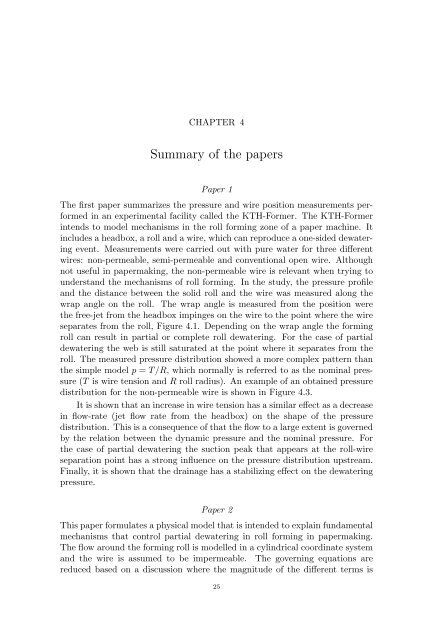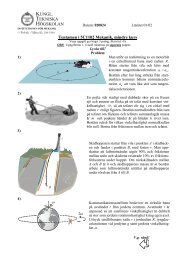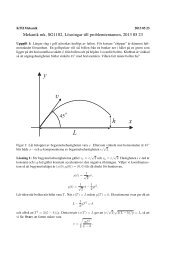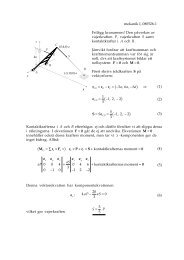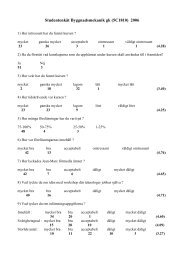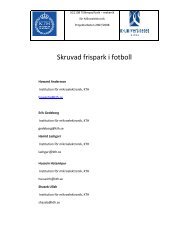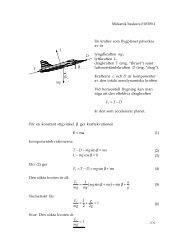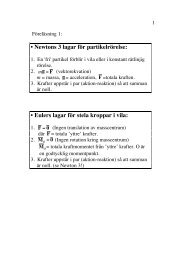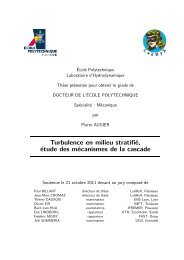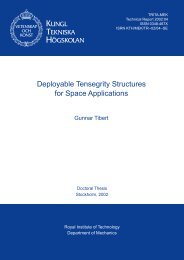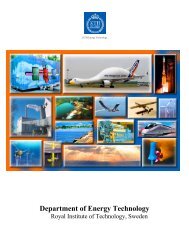Fluid mechanics of fibre suspensions related to papermaking - DiVA
Fluid mechanics of fibre suspensions related to papermaking - DiVA
Fluid mechanics of fibre suspensions related to papermaking - DiVA
Create successful ePaper yourself
Turn your PDF publications into a flip-book with our unique Google optimized e-Paper software.
CHAPTER 4<br />
Summary <strong>of</strong> the papers<br />
Paper 1<br />
The first paper summarizes the pressure and wire position measurements performed<br />
in an experimental facility called the KTH-Former. The KTH-Former<br />
intends <strong>to</strong> model mechanisms in the roll forming zone <strong>of</strong> a paper machine. It<br />
includes a headbox, a roll and a wire, which can reproduce a one-sided dewatering<br />
event. Measurements were carried out with pure water for three different<br />
wires: non-permeable, semi-permeable and conventional open wire. Although<br />
not useful in <strong>papermaking</strong>, the non-permeable wire is relevant when trying <strong>to</strong><br />
understand the mechanisms <strong>of</strong> roll forming. In the study, the pressure pr<strong>of</strong>ile<br />
and the distance between the solid roll and the wire was measured along the<br />
wrap angle on the roll. The wrap angle is measured from the position were<br />
the free-jet from the headbox impinges on the wire <strong>to</strong> the point where the wire<br />
separates from the roll, Figure 4.1. Depending on the wrap angle the forming<br />
roll can result in partial or complete roll dewatering. For the case <strong>of</strong> partial<br />
dewatering the web is still saturated at the point where it separates from the<br />
roll. The measured pressure distribution showed a more complex pattern than<br />
the simple model p = T/R, which normally is referred <strong>to</strong> as the nominal pressure<br />
(T is wire tension and R roll radius). An example <strong>of</strong> an obtained pressure<br />
distribution for the non-permeable wire is shown in Figure 4.3.<br />
It is shown that an increase in wire tension has a similar effect as a decrease<br />
in flow-rate (jet flow rate from the headbox) on the shape <strong>of</strong> the pressure<br />
distribution. This is a consequence <strong>of</strong> that the flow <strong>to</strong> a large extent is governed<br />
by the relation between the dynamic pressure and the nominal pressure. For<br />
the case <strong>of</strong> partial dewatering the suction peak that appears at the roll-wire<br />
separation point has a strong influence on the pressure distribution upstream.<br />
Finally, it is shown that the drainage has a stabilizing effect on the dewatering<br />
pressure.<br />
Paper 2<br />
This paper formulates a physical model that is intended <strong>to</strong> explain fundamental<br />
mechanisms that control partial dewatering in roll forming in <strong>papermaking</strong>.<br />
The flow around the forming roll is modelled in a cylindrical coordinate system<br />
and the wire is assumed <strong>to</strong> be impermeable. The governing equations are<br />
reduced based on a discussion where the magnitude <strong>of</strong> the different terms is<br />
25


